The heart starts beating a little faster walking into feed stores in springtime, doesn’t it? Cheeping chicks wait to be adopted by a family in stock tanks surrounded by onlookers and would-be buyers, but not all chicks are strong enough or healthy enough to make that last leg of the journey from hatchery to home. An important step in building a healthy flock is selecting the healthiest chicks. While not all health problems will be readily apparent, many of the most obvious signs of an unwell chick can be picked up while they’re still in the bin at the feed store. So how can you tell which chicks to pick? Find out below!
Not all of the body parts described in this article can be observed from a distance, so while you may not be permitted to handle the chicks, always ask the store employee to show you body parts of a chick you’re contemplating purchasing.
SIGNS OF A HEALTHY CHICK
ACTIVE & ALERT
A healthy chick is active and busy in the brooder when it’s not sleeping. Chicks sleep quite a bit, but when they are awake, they are active, eating, drinking, pooping, pooping, pooping…and exploring their environment. When approached, a healthy chick will react by scurring away, avoiding capture.
Happy, warm chicks do not huddle together while awake. Unwell, injured, cold, hungry or lost chicks often huddle together while awake. The chicks in the photo below, on their way home from the feed store were cold.
EYES
A healthy chick’s eyes are open, alert and bright. An unhealthy chick may have a thousand-mile stare, may not react when approached, may appear sleepy most of the time or crusted shut.
LEGS & FEET
A healthy chick’s feet and legs will be straight and they will stand tall. A chick with crooked toes or legs positioned oddly will need special care and while it may not necessarily be unhealthy, such deformities sometimes signal other underlying conditions that cannot be seen and may not be capable of correction.
POSTURE
A healthy chick will stand tall and walk with ease. An unhealthy or physically challenged chick may have difficulty standing or walking, crouch, sit back on its hocks, its neck may retract back into its body, its beak may point towards the sky or bend towards its back or it may flip backwards.
This Blue Laced, Red Wyandotte chick’s posture is abnormal. It sat in that position, staring blankly, slightly hunched over with its head pulled back into its body. Its condition worsened and it ultimately passed away.
This is classic stargazing posture, which is a condition affecting a chick’s nervous system, preventing them from eating and drinking normally.
NAVEL
A chick’s navel should be completely closed and clean. A chick’s navel should not be red or oozing and should have no crust, egg yolk or stringy attachments.
The navel on this newly hatched chick has a tiny bit of yolk sac string attached outside the body cavity.
The chick in this photo has an unhealed navel. The yolk should have been absorbed into the body before the chick hatched. This can result in a life-threatening infection known as omphalitis or mushy chick disease.
VENT
A healthy chick has a clean vent. The vent is the opening from which droppings are eliminated and eggs emerge (eventually). Pasty butt (aka: pasted vent or pasting up) is a condition that occurs in a baby chick when droppings stick to the down surrounding its vent. Poop builds up to form a blockage that can be fatal to the chicken unless removed. Pasty butt is not necessarily a sign of a sick chicken, but will require cleaning and monitoring. Read more about pasty butt prevention and treatment HERE.
Healthy looking fluff around a chick’s vent and belly button should be parted in order to inspect the vent and navel.
The vent is the orifice from which chickens pass bodily waste and from which hens pass eggs. The belly button is located just beneath the vent. Just as in human babies, after birth/hatch there is a small amount of tissue that must dry up and fall off the belly button. This dried tissue should not be confused with droppings and should never be pulled off as doing so could disembowel the chick.It is very common for chicks sold commercially to have pasty butt due to the stress of shipping, chilling or overheating and some infections. All chicks should be monitored for pasty butt and treated as detailed HERE when necessary.
QUIET
A healthy chick is relatively quiet. Happy, warm chicks may softly cheep, but not constantly and not plaintively. A chick that is is cold, hungry, in pain, sick or lost will emit a ‘pieep, pieep, pieep’ sound.
This is (St)Eve, a 6-day-old chick who was not at all pleased to have been separated from his peers or his mother. In this clip, one of these 2-day-old chicks is being treated for spraddle leg; the frantic, high-pitched chirping sounds indicate unhappiness as she struggles to walk for the first time on her splinted legs. (Meanwhile, her siblings can be seen cheering her on as they pick up and drop food, encouraging her to walk to it.)
These are the sounds of happy baby chicks, playing in the sandbox together.
Happy chicks thinking about escaping from the brooder in this video.
VACCINES
It is essential to know whether a chick has been vaccinated and if so, WHICH vaccine(s) they received. There are several vaccines commonly given to chicks at hatcheries. If a baby chick has been vaccinated for coccidiosis, a common, often fatal, intestinal disease in chicks, medicated chick starter feed negates the vaccine. Much more about coccidiosis explained HERE. The feed store or hatchery should ALWAYS be able to tell you whether and which vaccines chicks they’re selling have received.
Sources and further reading:
Storey’s Guide to Raising Chickens
The Chicken Health Handbook
The Chicken Health Handbook, 2nd Ed.
The Merck Veterinary Manual, 10th Ed
Kathy Shea Mormino
Affectionately known internationally as The Chicken Chick®, Kathy Shea Mormino shares a fun-loving, informative style to raising backyard chickens. …Read on


shop my SPONSORS
The heart starts beating a little faster walking into feed stores in springtime, doesn’t it? Cheeping chicks wait to be adopted by a family in stock tanks surrounded by onlookers and would-be buyers, but not all chicks are strong enough or healthy enough to make that last leg of the journey from hatchery to home. An important step in building a healthy flock is selecting the healthiest chicks. While not all health problems will be readily apparent, many of the most obvious signs of an unwell chick can be picked up while they’re still in the bin at the feed store. So how can you tell which chicks to pick? Find out below!
Not all of the body parts described in this article can be observed from a distance, so while you may not be permitted to handle the chicks, always ask the store employee to show you body parts of a chick you’re contemplating purchasing.
SIGNS OF A HEALTHY CHICK
ACTIVE & ALERT
A healthy chick is active and busy in the brooder when it’s not sleeping. Chicks sleep quite a bit, but when they are awake, they are active, eating, drinking, pooping, pooping, pooping…and exploring their environment. When approached, a healthy chick will react by scurring away, avoiding capture.
Happy, warm chicks do not huddle together while awake. Unwell, injured, cold, hungry or lost chicks often huddle together while awake. The chicks in the photo below, on their way home from the feed store were cold.
EYES
A healthy chick’s eyes are open, alert and bright. An unhealthy chick may have a thousand-mile stare, may not react when approached, may appear sleepy most of the time or crusted shut.
LEGS & FEET
A healthy chick’s feet and legs will be straight and they will stand tall. A chick with crooked toes or legs positioned oddly will need special care and while it may not necessarily be unhealthy, such deformities sometimes signal other underlying conditions that cannot be seen and may not be capable of correction.
POSTURE
A healthy chick will stand tall and walk with ease. An unhealthy or physically challenged chick may have difficulty standing or walking, crouch, sit back on its hocks, its neck may retract back into its body, its beak may point towards the sky or bend towards its back or it may flip backwards.
This Blue Laced, Red Wyandotte chick’s posture is abnormal. It sat in that position, staring blankly, slightly hunched over with its head pulled back into its body. Its condition worsened and it ultimately passed away.
This is classic stargazing posture, which is a condition affecting a chick’s nervous system, preventing them from eating and drinking normally.
NAVEL
A chick’s navel should be completely closed and clean. A chick’s navel should not be red or oozing and should have no crust, egg yolk or stringy attachments.
The navel on this newly hatched chick has a tiny bit of yolk sac string attached outside the body cavity.
The chick in this photo has an unhealed navel. The yolk should have been absorbed into the body before the chick hatched. This can result in a life-threatening infection known as omphalitis or mushy chick disease.
VENT
A healthy chick has a clean vent. The vent is the opening from which droppings are eliminated and eggs emerge (eventually). Pasty butt (aka: pasted vent or pasting up) is a condition that occurs in a baby chick when droppings stick to the down surrounding its vent. Poop builds up to form a blockage that can be fatal to the chicken unless removed. Pasty butt is not necessarily a sign of a sick chicken, but will require cleaning and monitoring. Read more about pasty butt prevention and treatment HERE.
Healthy looking fluff around a chick’s vent and belly button should be parted in order to inspect the vent and navel.
The vent is the orifice from which chickens pass bodily waste and from which hens pass eggs. The belly button is located just beneath the vent. Just as in human babies, after birth/hatch there is a small amount of tissue that must dry up and fall off the belly button. This dried tissue should not be confused with droppings and should never be pulled off as doing so could disembowel the chick.It is very common for chicks sold commercially to have pasty butt due to the stress of shipping, chilling or overheating and some infections. All chicks should be monitored for pasty butt and treated as detailed HERE when necessary.
QUIET
A healthy chick is relatively quiet. Happy, warm chicks may softly cheep, but not constantly and not plaintively. A chick that is is cold, hungry, in pain, sick or lost will emit a ‘pieep, pieep, pieep’ sound.
This is (St)Eve, a 6-day-old chick who was not at all pleased to have been separated from his peers or his mother. In this clip, one of these 2-day-old chicks is being treated for spraddle leg; the frantic, high-pitched chirping sounds indicate unhappiness as she struggles to walk for the first time on her splinted legs. (Meanwhile, her siblings can be seen cheering her on as they pick up and drop food, encouraging her to walk to it.)
These are the sounds of happy baby chicks, playing in the sandbox together.
Happy chicks thinking about escaping from the brooder in this video.
VACCINES
It is essential to know whether a chick has been vaccinated and if so, WHICH vaccine(s) they received. There are several vaccines commonly given to chicks at hatcheries. If a baby chick has been vaccinated for coccidiosis, a common, often fatal, intestinal disease in chicks, medicated chick starter feed negates the vaccine. Much more about coccidiosis explained HERE. The feed store or hatchery should ALWAYS be able to tell you whether and which vaccines chicks they’re selling have received.
Sources and further reading:
Storey’s Guide to Raising Chickens
The Chicken Health Handbook
The Chicken Health Handbook, 2nd Ed.
The Merck Veterinary Manual, 10th Ed



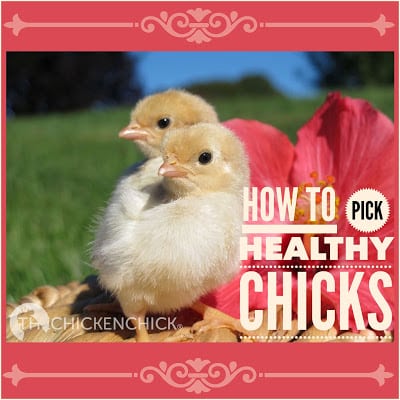

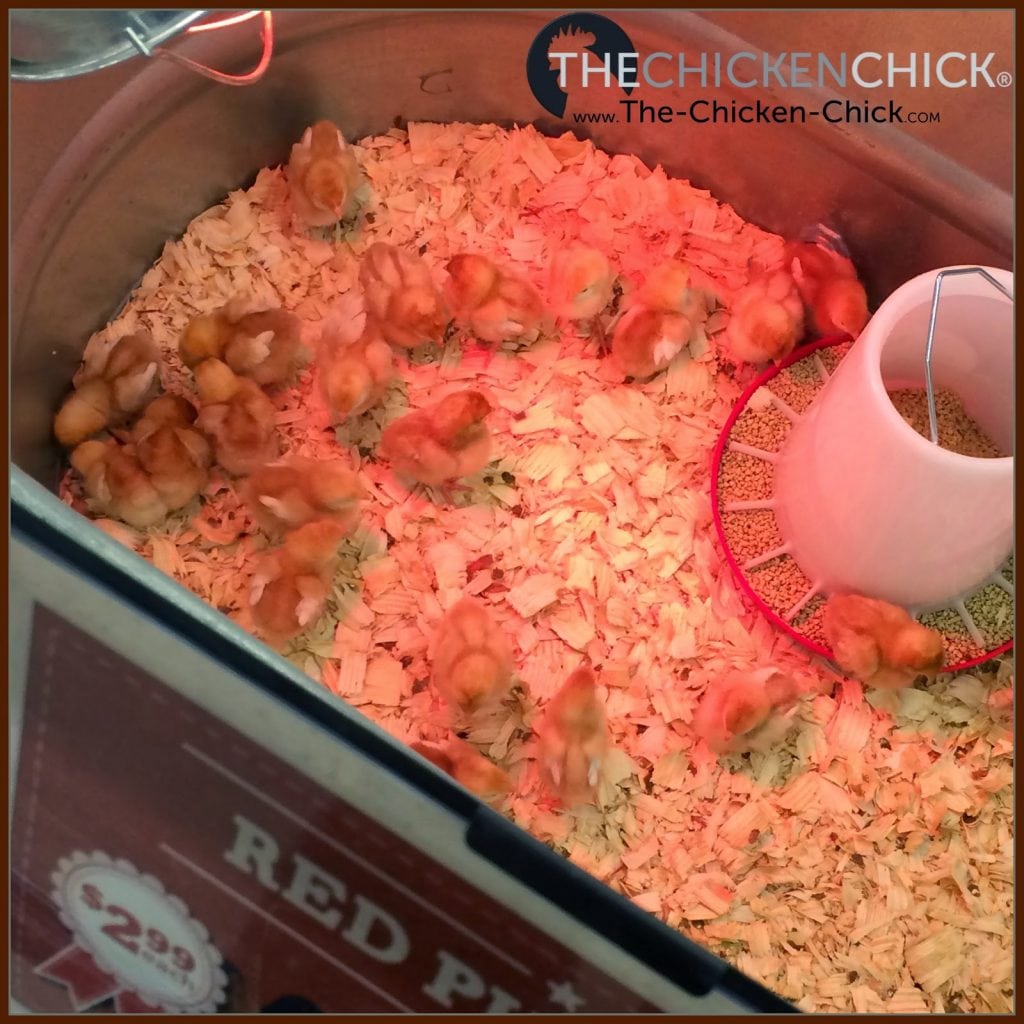
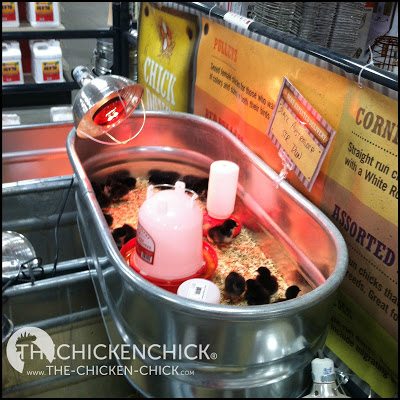
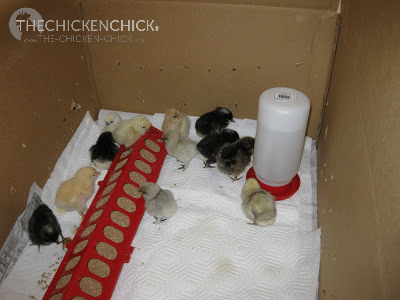
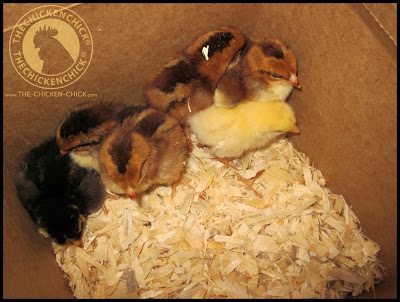
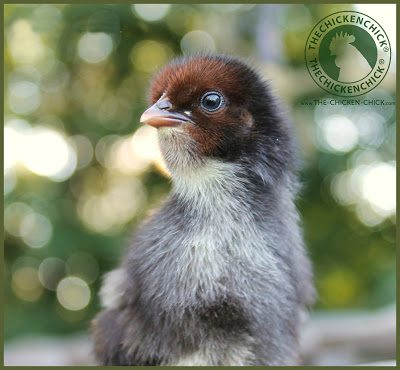
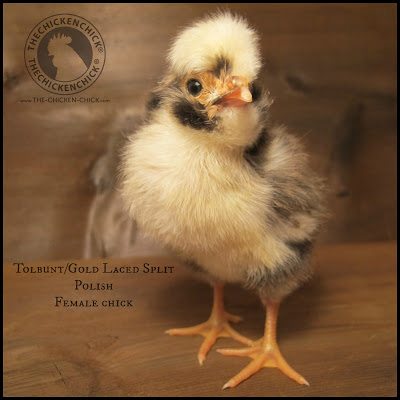
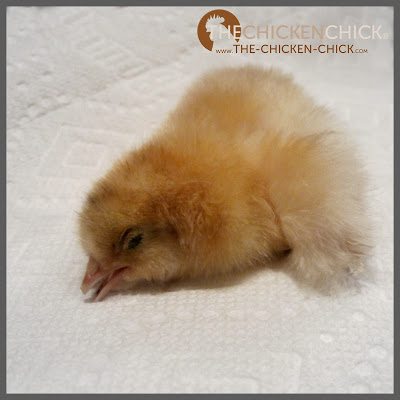
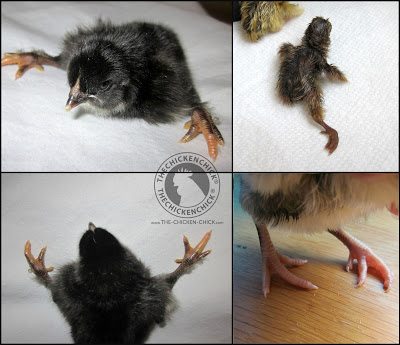
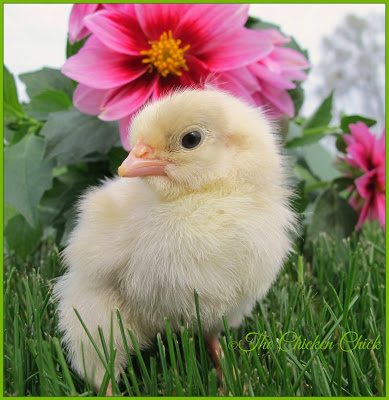

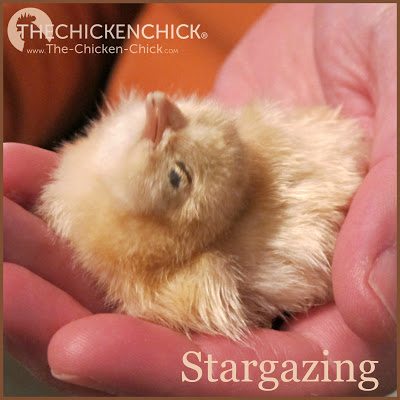
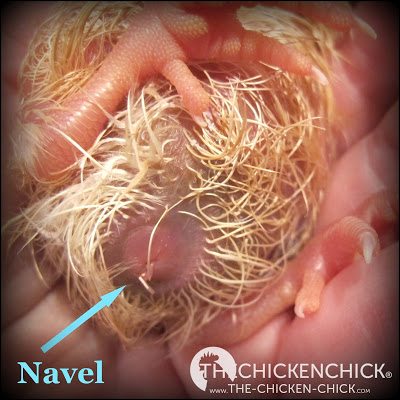
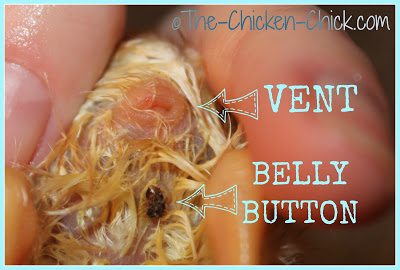
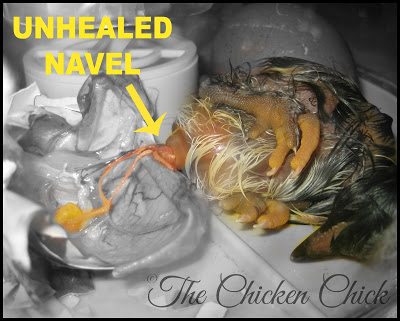

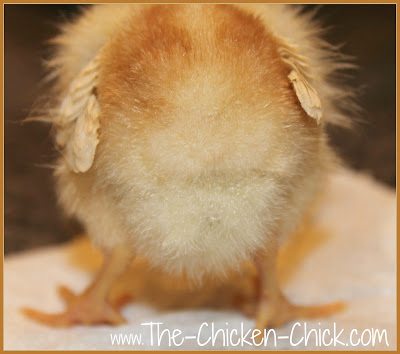
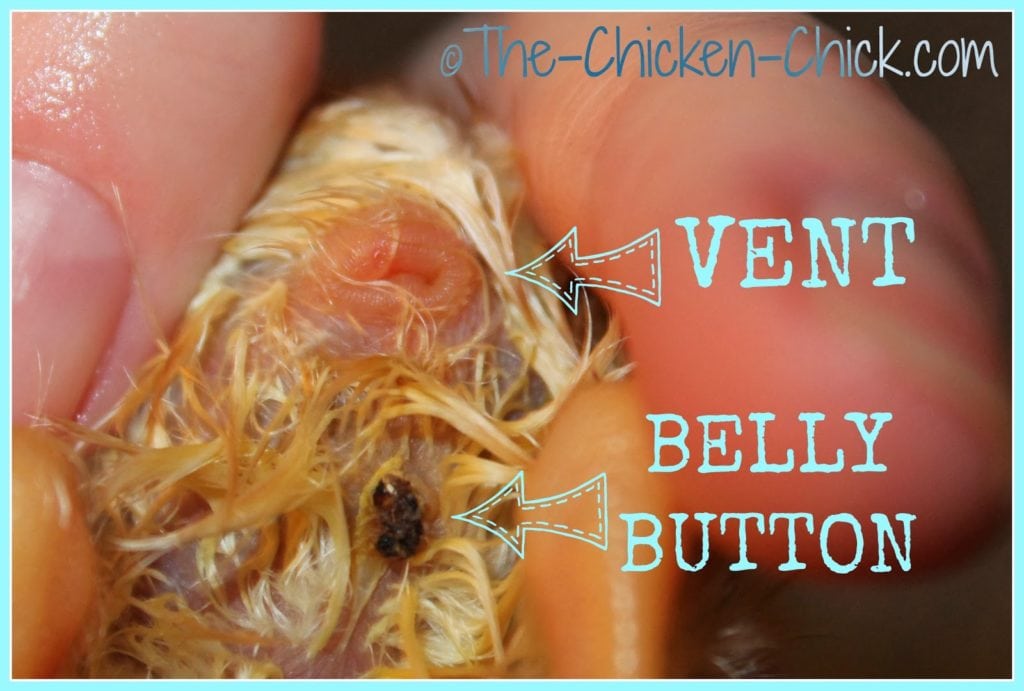

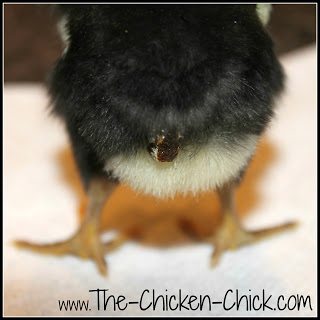
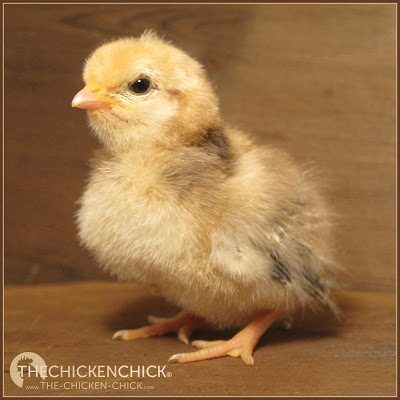
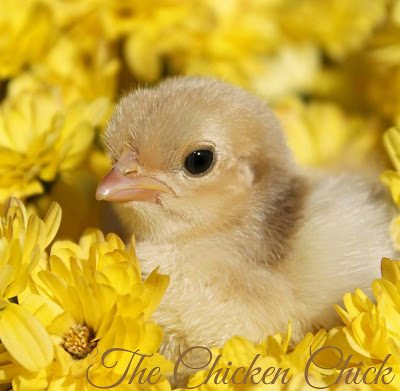

























Thank you!!!! I feel so grateful that you have taken the time to write all these. They are so helpful to a soon to be new chicken mom.
Wonderful info! Thanks!
Thanks for the info. I also am thankful for all you information
Loved the videos.
After the warm bathing I rubbed some neosporin on her butt and no more problems.